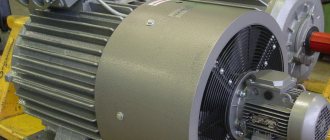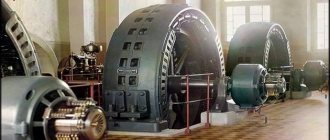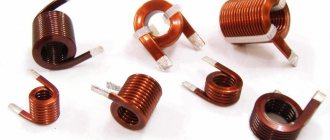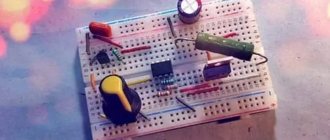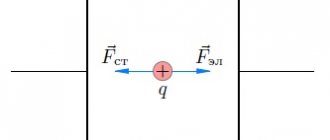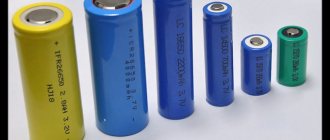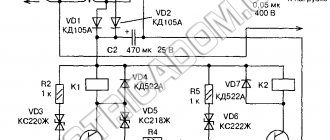Chemical current sources are devices and instruments that produce voltage during a chemical redox reaction. They are also called electrochemical, galvanic cells. Their basic principle of operation is based on the interaction of chemical reagents which, when reacting with each other, generate electricity in the form of direct current. This process occurs without mechanical or thermal influence, which are the main factors that play a superior role among other constant voltage generators. Chemical current sources, abbreviated as HIT, have long been used not only in everyday life, but also in production.
A little history of the creation of HIT
Back in the eighteenth century, the Italian scientist Luigi Galvani came up with the simplest element that chemically generated electric current. However, he was not only a scientist, but also a physicist, doctor, and physiologist. He was interested in and conducted experiments that were aimed at studying the reactions of animals to external stimuli. Like everything ingenious, the first chemical source of energy was obtained by Luigi absolutely by accident, during numerous experiments on frogs. After attaching two metal plates to the frog's leg muscle, muscle contraction was observed. Galvani considered this a nervous reaction to an external stimulus and outlined this in the results of his research, which fell into the hands of another great scientist, Alessandro Volta. He laid out his theory about the occurrence of tension as a result of a chemical reaction that arose between two metal plates in the environment of the muscle tissue of a frog.
The first chemical source of electric current was a container with a salt composition, into which two plates of different materials were immersed. One is copper, the other is zinc. It was this device that in the future, and more specifically in the second half of the nineteenth century, was used in the invention and creation of a manganese-zinc cell within which was the same salt electrolyte.
Operating principle
Power supplies 24 and 12 Volts
The device that produces electric current contains two electrodes that are placed between the electrolyte. It is at their border of contact that a small potential appears. One of them is called the cathode, and the other the anode. All these elements together form an electrochemical system. During a redox reaction between the electrodes, one element donates tiny particles of electrons to the other. Therefore, it cannot happen forever, and over time, the properties of each element of this chain are simply lost. Electrodes can be presented in the form of metal plates or grids. After immersing them in a medium with an electrolyte, a potential difference arises between their terminals, which is called open circuit voltage. Even if at least one of the electrodes is removed from the electrolyte, the voltage generation process stops.
Composition of electrochemical systems
The following chemicals are used as electrolytes:
- Aqueous solutions based on alkalis, acids, salts, etc.;
- Non-aqueous ionic conducting solutions that are obtained by dissolving salts in inorganic or organic solvents;
- Solid compounds containing an ionic lattice, where one of the ions is mobile;
- Matrix electrolytes. This is a special type of liquid solutions and melts that are located in the pores of a solid non-conducting element - an electron carrier;
- Molten salts;
- Ion exchange electrolytes with unipolar conductivity system. Solids with a fixed ionogenic group of the same sign.
Classification of galvanic cells and their selection
Basic concepts about relay protection
Generators of electric current resulting from a chemical reaction are divided into:
- Sizes;
- Design features;
- The method and reagent through which electricity is generated.
All elements that produce current during a chemical reaction are divided into:
- Chargers that can be repeatedly charged from a direct current source during operation are called batteries;
- Non-rechargeable, that is, disposable sources that, after the completion of a chemical reaction, simply become unusable and must be disposed of. Simply it is a galvanic cell or battery.
In order to select a source of electricity based on a chemical reaction, you need to understand its characteristics, which include:
- Voltage between anode and cathode when the circuit is open. This indicator most often depends on the selected electrochemical system, as well as the concentration and treated of all components;
- Source power;
- Current indicator;
- Capacity;
- Electrical indicators, that is, the number of charge and discharge cycles;
- Operating temperature range;
- The shelf life between the time an item is created and before it is put into use;
- Full service life;
- Strength, that is, protection of the housing from various mechanical damage and influences, as well as vibrations;
- Working position, some of them only work in horizontal positions;
- Reliability;
- Easy to operate and maintain. Ideally, there is no need for the slightest intervention in the work during the entire service life.
When choosing the right battery or accumulator, you must take into account its electrical ratings such as voltage and current, as well as capacity. It is this that is key to maintaining the functionality of the device connected to the source.
MAIN TE PROBLEMS
Like any current source, fuel cells are characterized by voltage, power and service life. The voltage U of the fuel cell is lower than the EMF due to the ohmic resistance of the electrolyte and electrodes R and the polarization of the cathode DEK and anode DEA,
U = Ее – IR – (DЭК + DEа), (6)
where / is the current strength.
The polarization of the electrodes is due to the slowness of the processes occurring on the electrodes and is equal to the potential difference of the electrode under current EI and in the absence of current EI=0
DE = ЕI – ЕI=0
The polarization of the electrodes increases with increasing current density /, that is, the current per unit electrode surface area S:
At the same current, it is possible to reduce the current density and polarization by using porous electrodes with a highly developed surface (up to 100 m2/g). In a porous electrode, contact between gas (reagent), electrolyte (ionic conductor) and electronic conductor occurs. Processes in porous electrodes are quite complex.
To speed up reactions, catalysts are introduced into porous electrodes. FC catalysts are required to have high activity, long service life and reasonable cost. The choice of catalyst is determined both by these requirements and by the types of fuel cells and fuel, operating temperature and areas of application of fuel cells. The most widely used materials are platinum, palladium, nickel and some semiconductor materials. Porous electrodes are a complex structure in which electrochemical reactions occur, ions and electrons are supplied and removed, reagents are supplied, reaction products and heat are removed. These processes are considered in the theory of porous electrodes (macrokinetics of electrode processes), which allows optimizing their structure and thickness [6].
In accordance with equation (6), the FC voltage decreases with increasing current. The dependence of the fuel cell voltage on the current is called the current-voltage characteristic. The voltage of most fuel cells lies in the range of 0.8–0.9 V. The actual efficiency of the fuel cell ηр is lower than the theoretical one and is determined by the equation
(7)
where ηр is the real number of electrons per reagent molecule.
The value of ηр is lower than η of equation (5) due to the incomplete use of reagents and their consumption for the own needs of installations with fuel cells. As can be seen, all factors that increase voltage (see equation (6)) increase efficiency.
Power P also depends on voltage:
P = UI
and specific power per unit mass m and volume V of the fuel cell
During operation, the characteristics of fuel cells gradually deteriorate, which is due to deactivation and wear of catalysts, corrosion of electrode bases, changes in the structure of electrodes and other reasons. Deterioration of fuel cell characteristics limits their service life. To increase the service life of fuel cells, chemically resistant catalysts (platinum metals and oxides of some metals) and electrode bases (graphite and nickel) are used. The service life of some fuel cells reaches 40 thousand hours.
Modern chemical current sources and their applications
Introduction to peak and other electricity tariff zones
It is difficult for a person to live a modern life without these mobile energy generators, which he encounters throughout his life, starting with children's toys and ending with, say, a car.
The areas of application of various batteries and accumulators are so diverse that it is very difficult to list them. The operation of any mobile phone, computer, laptop, watch, remote control would be impossible without this portable and very compact device for creating a stable electrical charge. In medicine, sources of chemical energy are widely used to create any device that helps a person live a full life. For example, for hearing aids and pacemakers that can only operate from portable voltage sources, so as not to confine a person to wires. In production, entire battery systems are used to provide voltage for shutdown and protection circuits in the event of a loss of incoming high voltage at substations. And this food is also widely used in all vehicles, military and space technology. One of the types of common batteries is lithium electric current sources, since this particular element has a high specific energy. The fact is that only this chemical element turns out to have a strong negative potential among all substances known and studied by man. Lithium-ion batteries stand out among all other batteries in terms of the amount of energy generated and their small dimensions, which allows them to be used in the most compact and small electronic devices.
Tips for using batteries
And now the simplest tips that will help your batteries last as long as possible.
- Protect batteries from fire and water - both factors are fraught with failure.
- Excessive cooling and heating, as well as sudden temperature changes are also destructive.
- Use the type of charger that matches your battery, of which there are 4.
- The first is a slow charge with a low constant current. It occurs over a fairly long period of time – up to 18 hours. This method is suitable for almost all batteries and is the safest.
- The second is fast charge. Occurs within 3-5 hours at a constant current of 1/3C.
- The third is delta V charge (accelerated) - the initial current is equal to the nominal capacity of the element, the voltage is constantly changing. Charging occurs in 1-1.5 hours. This may result in overheating and destruction of the device.
- The fourth type is called reversible. With it, long charge pulses are replaced by short discharge pulses. This method is most useful for batteries with a “memory effect”.
Advice! The instructions supplied with the batteries usually contain recommendations on the charging mode.
This concludes our review. We disassembled electrochemical current sources and got a simple idea of their operation. If you want to study the topic in depth, then you can’t do without tutorials and videos that can be easily found on the Internet.
Methods for recycling chemical energy sources
The problem of recycling chemical voltage sources of different sizes is an environmental problem for the entire planet. Modern sources contain up to thirty chemical elements that can cause significant harm to natural resources, therefore entire programs have been developed for their disposal and specialized processing workshops have been built. Some methods make it possible not only to efficiently recycle these harmful substances, but also to return them to production, thereby protecting the environment. In order to extract non-ferrous metals from batteries and accumulators, entire pyrometallurgical and hydrometallurgical complexes have now been developed and used in civilized countries that monitor and care about the environment. The most common method for recycling waste chemical power sources is a method that works by combining these processes. Its main advantage is considered to be a high degree of extraction with a minimum amount of waste. This method of pyrometallurgical, hydrometallurgical and mechanical processing includes eight main stages:
- Grinding;
- Magnetic separation;
- Burning;
- Additional grinding;
- Isolation of large and small elements using screening;
- Water purification and leaching;
- Sulfuric acid leaching;
- Electrolysis.
Organizing the correct collection and disposal of chemical waste makes it possible to minimize the negative impact on both the environment and human health.
ELECTROCHEMICAL POWER INSTALLATIONS
To increase the current and voltage, fuel cells are connected into batteries. The latter can work if reagents are continuously supplied to them and reaction products and heat are removed. The device, consisting of fuel cell batteries, systems for supplying reagents, automation, removal of reaction products and heat, is called an electrochemical generator (ECG). In turn, the ECH is part of an electrochemical power plant (ECP), which, in addition to the ECH, includes a fuel preparation unit, a DC-AC converter (inverter) and a heat utilization unit (Fig. 4).
Rice. 4. ECG scheme
The choice of the initial fuel used in EPP is determined primarily by its cost, availability, environmental characteristics, chemical reactivity and specific energy per unit mass. Therefore, natural gas, coal and some inexpensive synthetic fuels, such as methanol, are used as the starting fuel. However, only hydrogen can be oxidized in fuel cells at an acceptable rate, and in special types of fuel cells – carbon monoxide and methanol. Therefore, natural fuels and methanol are pre-converted in the fuel preparation unit into hydrogen and other gases, for example by reactions
CH4+H2O ↔ CO + ZH2, (8)
CO + H2O ↔ CO2 + H2, (9)
CH3OH + H2O ↔ CO2 + ZH2, (10)
C + H2O ↔ CO + H2 (11)
The conversion products are then fed to the fuel cell. Since the actual efficiency of fuel cells (40-65%) is below 100%, their operation generates heat, which can be used either for district heating or for generating additional electrical energy using steam or gas turbines.

